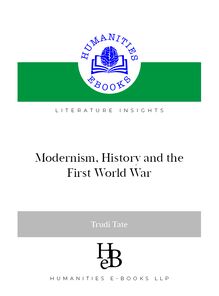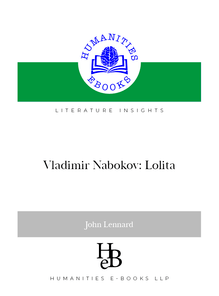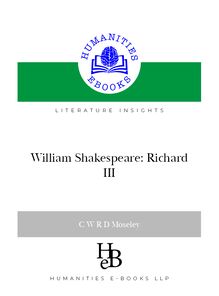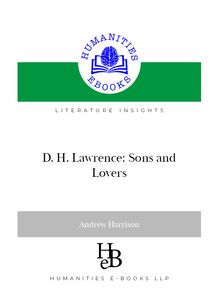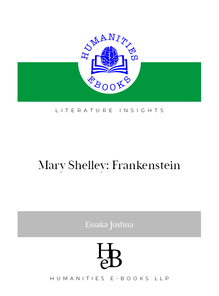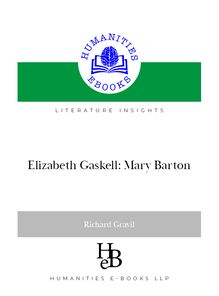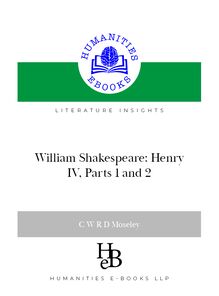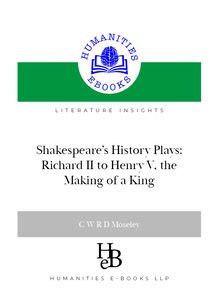-
 Univers
Univers
-
 Ebooks
Ebooks
-
 Livres audio
Livres audio
-
 Presse
Presse
-
 Podcasts
Podcasts
-
 BD
BD
-
 Documents
Documents
-
- Cours
- Révisions
- Ressources pédagogiques
- Sciences de l’éducation
- Manuels scolaires
- Langues
- Travaux de classe
- Annales de BEP
- Etudes supérieures
- Maternelle et primaire
- Fiches de lecture
- Orientation scolaire
- Méthodologie
- Corrigés de devoir
- Annales d’examens et concours
- Annales du bac
- Annales du brevet
- Rapports de stage
La lecture à portée de main
76 pages
English
Découvre YouScribe en t'inscrivant gratuitement
Je m'inscrisDécouvre YouScribe en t'inscrivant gratuitement
Je m'inscris
Obtenez un accès à la bibliothèque pour le consulter en ligne
En savoir plus
En savoir plus
76 pages
English
Obtenez un accès à la bibliothèque pour le consulter en ligne
En savoir plus
En savoir plus

Description
Places Mary Shelley's revolutionary novel in its political, philosophical and literary context.
Sujets
Informations
| Publié par | Humanities eBooks |
| Date de parution | 11 janvier 2021 |
| Nombre de lectures | 1 |
| EAN13 | 9781847600172 |
| Langue | English |
Informations légales : prix de location à la page 0,0250€. Cette information est donnée uniquement à titre indicatif conformément à la législation en vigueur.
Extrait
Literature Insights General Editor: Charles Moseley
Màry SheLLey Frankenstein
EssàKà JOshUà
RUNNING HeàD 1
‘I felt what the duties of acreator towards his creature were’
http//www.humanities-ebooks.co.uk FoRadvicEonuSEoFtHiSEbookplEaSEScRolltopagE2
publicationdata
© ESSàkà JOShUà, 2007
The Author has asserted her right to be identiîed as the author of this Work IN àCCORDàNCe wITh The cOPyRIGhT, deSIGNS àND pàTeNTS aCT 1988.
pUBLISheD ByHumanities-Ebooks.co.uk tIRRIL HàLL, tIRRIL, peNRITh ca10 2JE
rEadingoptions
*To use the navigation tools, the search facility, and other features of the Adobe toolbar, this Ebook should be read in default view. *tO NàvIGàTe ThROUGh The CONTeNTS USe The hyPeRLINkeD ‘bOOkMàRkS’ àT the left of the screen. *To search, expand the search column at the right of the screen or click ON The BINOCULàR SyMBOL IN The TOOLBàR. *For ease of reading, use <CTRL+L> to enlarge the page to full screen *Use <Esc> to return to the full menu. *Hyperlinks appear in Blue Underlined Text. To return from an internal hyPeRLINk TO yOUR STàRTING POINT PLeàSe USe The PRevIOUS vIew BUTTON
licEncEandpErmissions
pURChàSING ThIS BOOk LICeNSeS yOU TO ReàD ThIS wORk ON-SCReeN àND TO PRINT one copy for your own use. Copy and paste functions are disabled. No part of this publication may be otherwise reproduced or transmitted or distributed without the prior written permission of both the copyright owner and the pub-lisher. Making or distributing copies of this book constitutes copyright infringe-ment and would be liable to prosecution. Thank you for respecting the rights of the author.
isbn 978-1-84760-017-2
Mary Shelley: ‘Frankenstein’
Essaka Joshua
Bibliographical Entry: Joshua, Essaka.Mary Shelley: ‘Frankenstein’. Literature Insights. Tirril: Humanities-Ebooks, 2007
A Note on the Author
Essaka Joshua took her BA and MA at Oxford University and her PhD at the Univer-sity of Birmingham, where she is now a lecturer in the department of English. She has published several articles on Romantic and Victorian literature, including studies of Mary Shelley, William Wordsworth, Thomas Lovell Beddoes, Charlotte Brontë, Charlotte Smith, and George Bernard Shaw. Dr Joshua is the author ofPygmalion and Galatea: The History of a Narrative in English Literature(Ashgate, 2001), and a textbook onThe Remains of the Day(First and Best, 2004). Her bookThe Roman-tics and the May Day Traditionis forthcoming (Ashgate, 2007), and she is currently working on a British Academy funded study of the cultural and academic signiî-cance of Göttingen University in the 1820s.
Contents
A Note on the Author
Part 1: Life, Times, Contexts and Themes 1.1 Biography and Literary Career 1.2 The Author’s Literary Strategy 1.3 The 1818 text and the 1831 text: the differences 1.4 Literary Context 1.5 The Cult of Sensibility 1.6 The Jacobin novel 1.7 The Gothic Novel 1.8 William Godwin 1.9Paradise Lost 1.10 Prometheus and Pygmalion 1.11 Historical and Socio-Political Context Part 2. The Three Narratives 2.1 The Letters 2.2 Victor Frankenstein 2.3 The Creature 2.4 Female Characters
Part 3: Critical Responses
Annotated Bibliography of Further Reading Appendices: Hyperlinked Material
Part 1: Life, Times, Contexts and Themes
1.1 Biography and Literary Career
Mary Shelley was born Mary Wollstonecraft Godwin on 30 August 1797 in London, the daughter of two of the most important radical writers of the late eighteenth century. Her mother, Mary Wollstonecraft (1759–1797), wrote the landmark feminist workA Vindication of the Rights of Woman(1792), which argues for the moral and practi-cal value of educating women. Mary did not know her mother, who died a few days after giving birth to her. Her father, the political philosopher William Godwin (1756– 1836), is now best known for his novelCaleb Williamswhich has impor- (1794), tant similarities toFrankenstein, and also for his political studyEnquiry Concerning Political Justice(1793) which asserts the importance of equality and social change stopping short of revolution.Political Justicewas extremely inuential not only on his daughter but also on many important writers of the time, like the ‘Lake Poets’, Samuel Taylor Coleridge, William Wordsworth and Robert Southey. Mary Wollstonecraft and William Godwin were an unorthodox couple. Theirs was an age of revolution: France and Britain were at war and the French Revolution, the ideas of which they supported, thundered through Europe changing societies, morals and lives. Godwin had well-publicised (and, to some, scandalous) views against the institution of marriage, maintaining that it forced women into dependence on men and to rely, for their survival, on the generosity of their husbands and male relatives. Wollstonecraft was of the same opinion, suggesting that marriage was a form of slavery which oppressed women. So they themslves outed convention by not mar-rying until after Mary was pregnant. Nevertheless, the pressures of society were such that they felt the need to conform to protect Wollstonecraft’s reputation. The couple compromised with a form of marriage that allowed them to keep the independence they had been used to when single, but whether this would have worked will never be known, as îve months later Wollstonecraft died. In spite of Godwin’s heart-felt biography of his late wife, her reputation suffered nonetheless, and her name was synonymous with disgrace for over a hundred years after her death.
Frankenstein 7
Great things were expected of their daughter by the forward-thinking radical writ-ers of her day. Mary was very aware of the literary fame of her parents and had liter-ary ambitions herself. In 1814, when she was 16, she fell in love with the poet and radical sympathiser Percy Bysshe Shelley (1792–1822). In July of that year Mary and Percy, who was already married to someone else, eloped to the Continent, returning to England once the fuss had died down. Godwin greatly disapproved of his daugh-ter running off in this way, but there was little he could do as Shelley often gave him money to help înance his research. The pair were able to marry in 1816, when Shelley’s abandoned wife drowned herself. In 1815, Mary gave birth, prematurely, to a daughter, who died a few days later. The loss deeply affected her. In the next year she gave birth to a son, William, leav-ing England for Geneva once she had recovered. It was here, in June 1816, that she began to writeFrankenstein, completing it in May 1817. She had a daughter, Clara, in September 1817, and this has interested psychoanalytic critics who see the loss of the îrst child and Mary’s third pregnancy as signiîcant for the subject matter of the novel — creation. The novel owes much to an informal ghost story-telling contest given in Lord Byron’s house, the Villa Diodati, near Geneva. Gothic literature was popular at the time, and the guests entertained each other by inventing frightening stories. The novel was more than a spur of the moment tale, however. In 1817, Mary expanded it, incor-porating ideas about philosophy, morality and social justice, and dedicated it to her father.Frankensteinwas îrst published, without her name, in January 1818. Some thought that Percy Shelley had written it. Mary gave her reasons for not revealing her authorship in a letter to Sir Walter Scott, who reviewed the novel. She writes that she was
anxious to prevent your continuing in the mistake of supposing Mr Shelley guilty of a juvenile attempt of mine; to which – from its being written at an early age, I abstained from putting my name – and from respect to those persons from whom I 1 bear it. I have therefore kept it concealed except from a few friends.
The novel was accompanied by an anonymous preface by the author’s husband, who had read the manuscript carefully in its early stages making suggestions for better turns of phrase, but not interfering substantially. Mary altered the novel slightly in
1 beTTy t. beNNeTT àND chàRLeS E. rOBINSON, eDS.The Mary Shelley Reader: Containing Frankenstein, Mathilda, Tales and Stories, Essays and Reviews, and Letters(New York: Oxford University Press, 1990), 392.
-
 Univers
Univers
-
 Ebooks
Ebooks
-
 Livres audio
Livres audio
-
 Presse
Presse
-
 Podcasts
Podcasts
-
 BD
BD
-
 Documents
Documents
-
Jeunesse
-
Littérature
-
Ressources professionnelles
-
Santé et bien-être
-
Savoirs
-
Education
-
Loisirs et hobbies
-
Art, musique et cinéma
-
Actualité et débat de société
-
Jeunesse
-
Littérature
-
Ressources professionnelles
-
Santé et bien-être
-
Savoirs
-
Education
-
Loisirs et hobbies
-
Art, musique et cinéma
-
Actualité et débat de société
-
Actualités
-
Lifestyle
-
Presse jeunesse
-
Presse professionnelle
-
Pratique
-
Presse sportive
-
Presse internationale
-
Culture & Médias
-
Action et Aventures
-
Science-fiction et Fantasy
-
Société
-
Jeunesse
-
Littérature
-
Ressources professionnelles
-
Santé et bien-être
-
Savoirs
-
Education
-
Loisirs et hobbies
-
Art, musique et cinéma
-
Actualité et débat de société
- Cours
- Révisions
- Ressources pédagogiques
- Sciences de l’éducation
- Manuels scolaires
- Langues
- Travaux de classe
- Annales de BEP
- Etudes supérieures
- Maternelle et primaire
- Fiches de lecture
- Orientation scolaire
- Méthodologie
- Corrigés de devoir
- Annales d’examens et concours
- Annales du bac
- Annales du brevet
- Rapports de stage
Signaler un problème
YouScribe
Le catalogue
Le service
© 2010-2024 YouScribe
